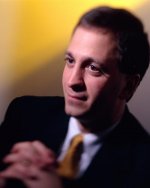Quality is as quality does. Some here are just talking about one aspect. The one thing that small format and digital people always advocate - resolution. I'm not assuming you don't know about LF, I'm replying on the general
comments about "small is just as good." In what? Resolution? What about everything else? I shoot a lot of camera formats from quarter plate to mammoth.
Photography is about more than resolution, including dynamic range, tones, grain, use of lens aberrations (such as soft focus), aspect ratio, and more. Oh, and yes, movements. To me trying to fiddle with a movements attachment on a digital small format or 35 mm is like trying to turn a Mazda Miata into a trailer towing vehicle. It can be done, but why? Use the right tool for the right job. There is no one camera or format that is right for all jobs. Not street photography, architecture (I'm sure you saw the Gov job posting where they REQUIRE Large Format skills recently going around the web), portraits, and much more. The one guy saying "I shot a 6mp digital, and a Medium Format, and no one could tell the prints apart!" is pure hyperbole.
And to Oscuro, lighten up. I didn't say anything about you "must" use a race car, er, camera. I was making a point that you can't do certain things with certain cameras. Just like the rhetoric about carrying a LF camera around for Paris shots. Actually, based on the number of Eiffel Tower photographs taken per year, I'd say a
Cell Phone camera is the most effective. For a lot of things too. Just not for everything, such as short depth of field.
Of course, no matter what hardware you use, you must master it. I like QT Long's LF work
http://www.terragalleria.com/statement.html at all the US National Parks:
http://www.terragalleria.com/parks/. Take a look at his photos, and him using LF in very tight spaces.


